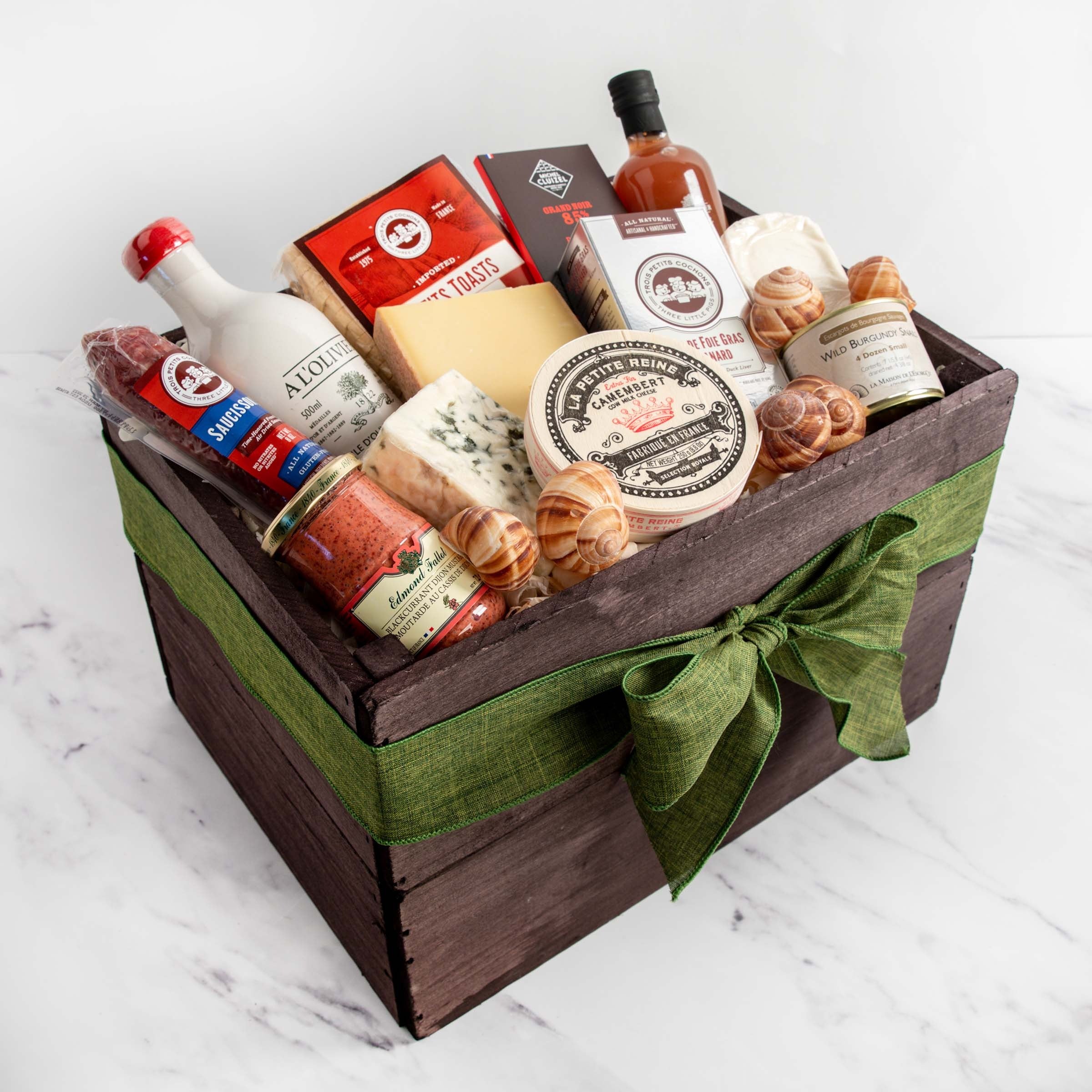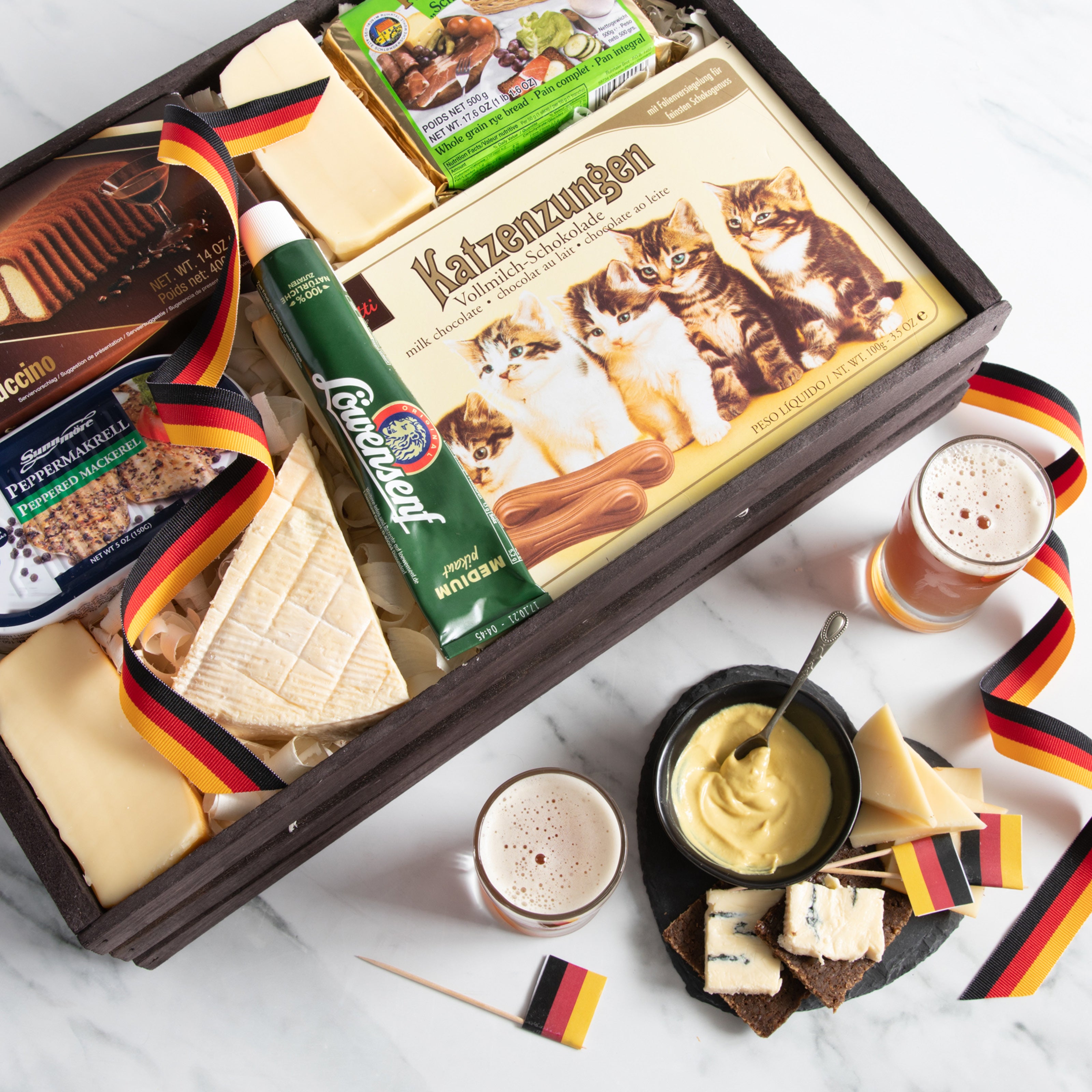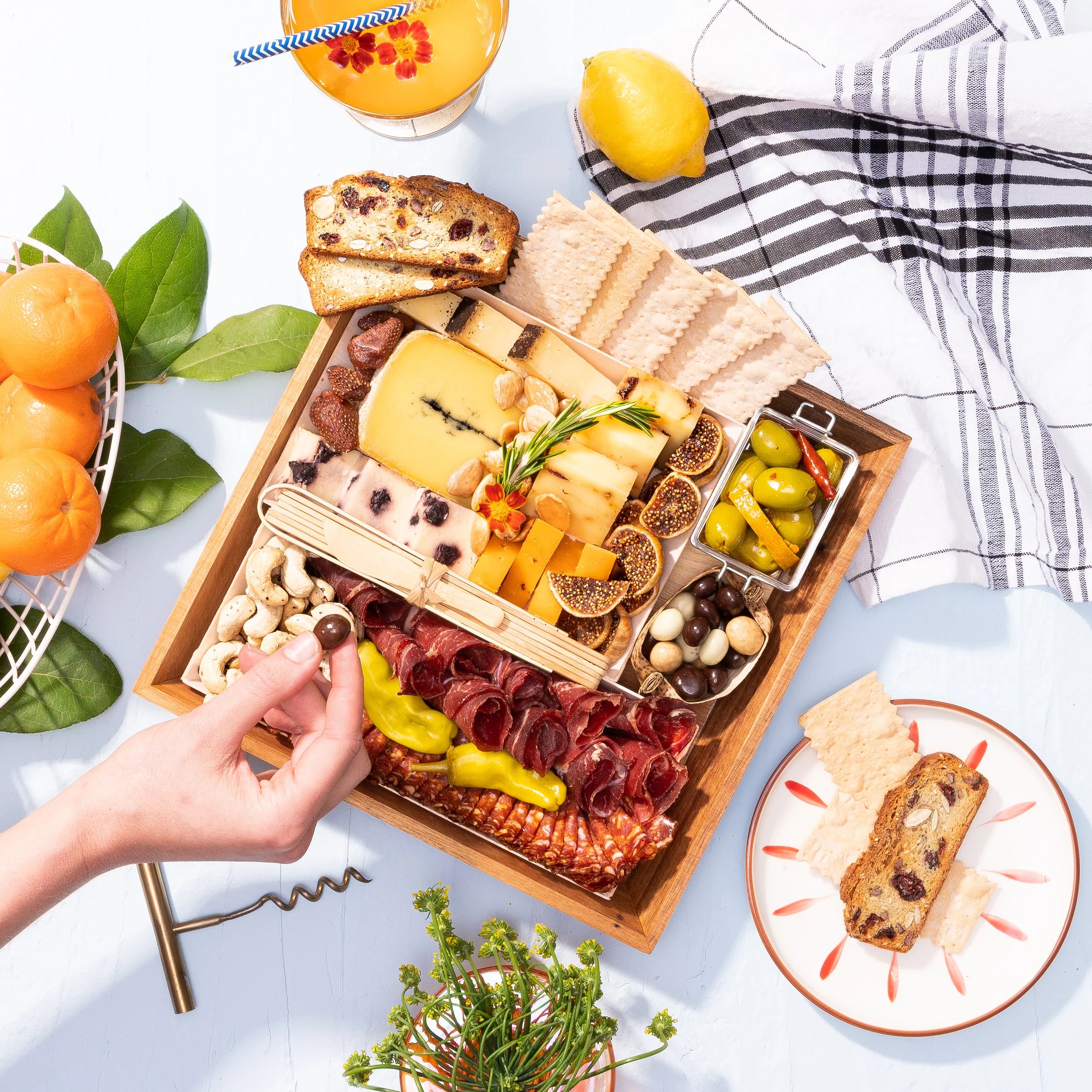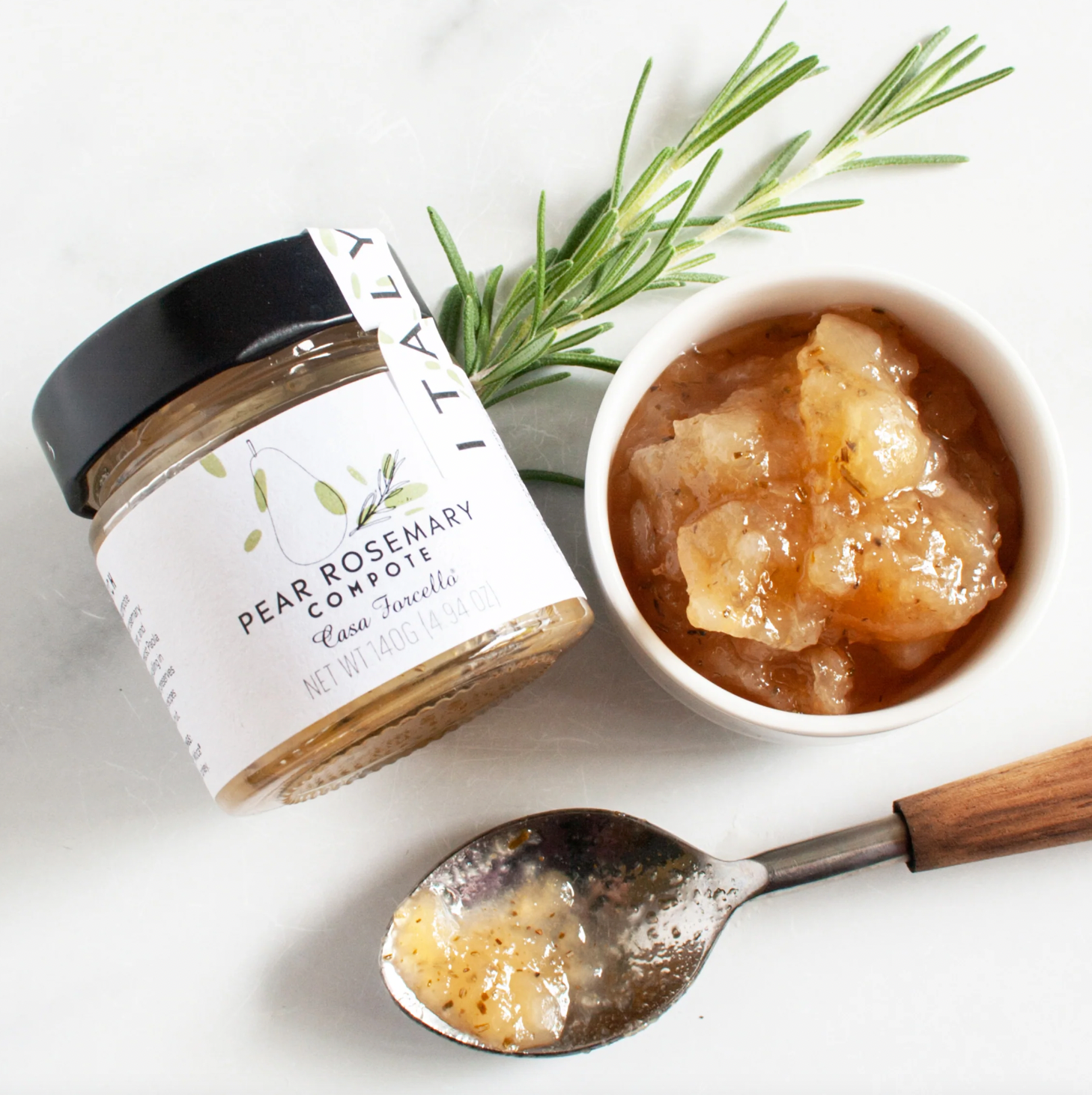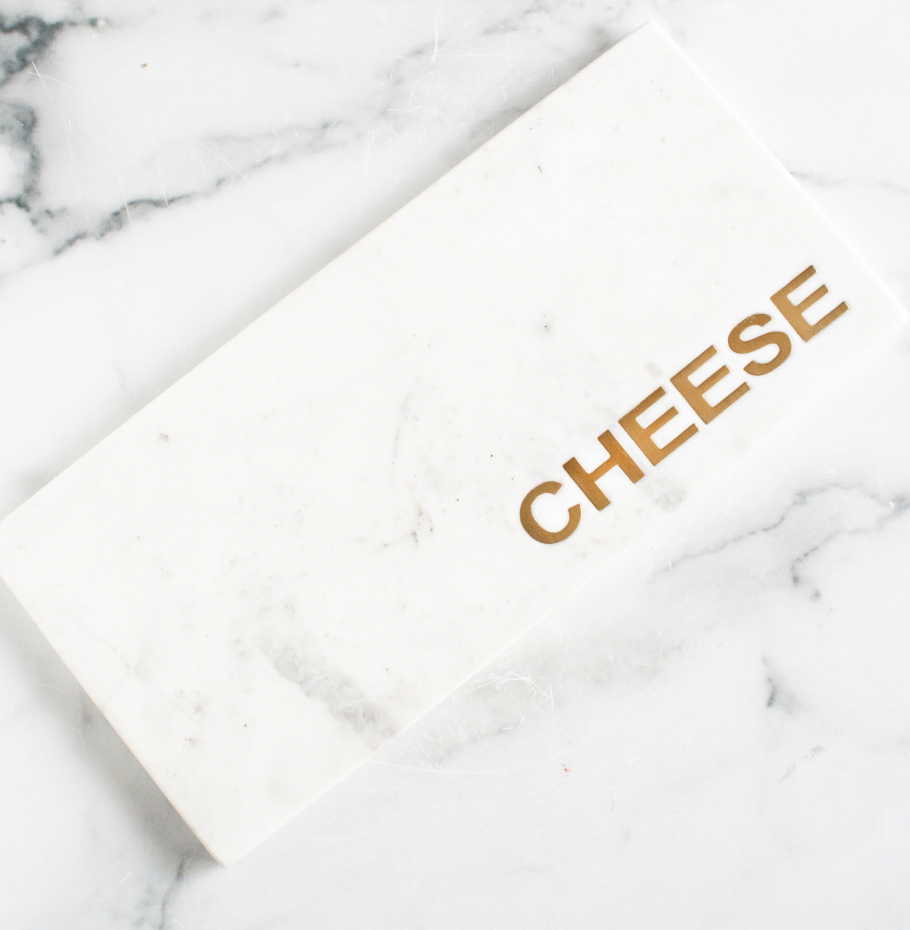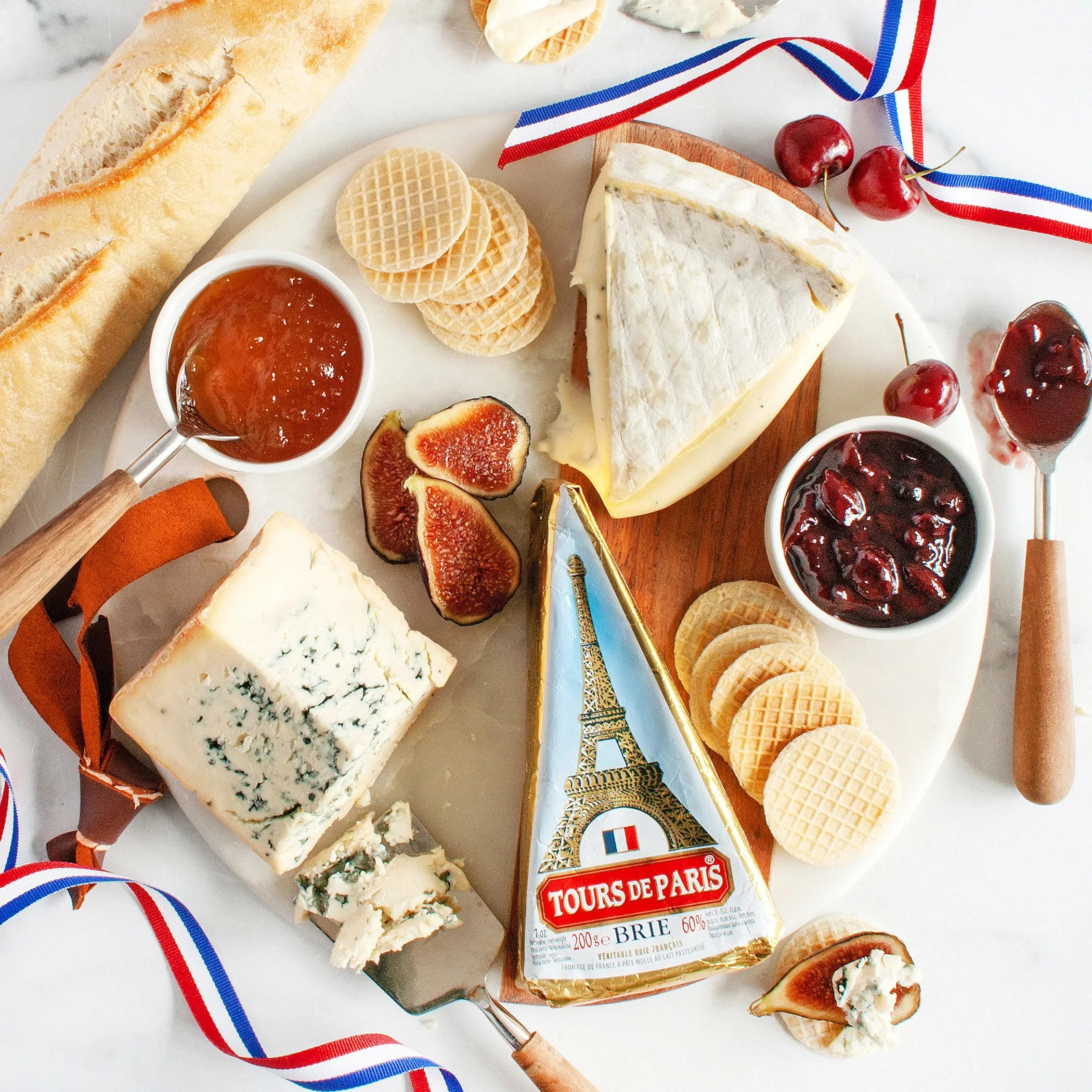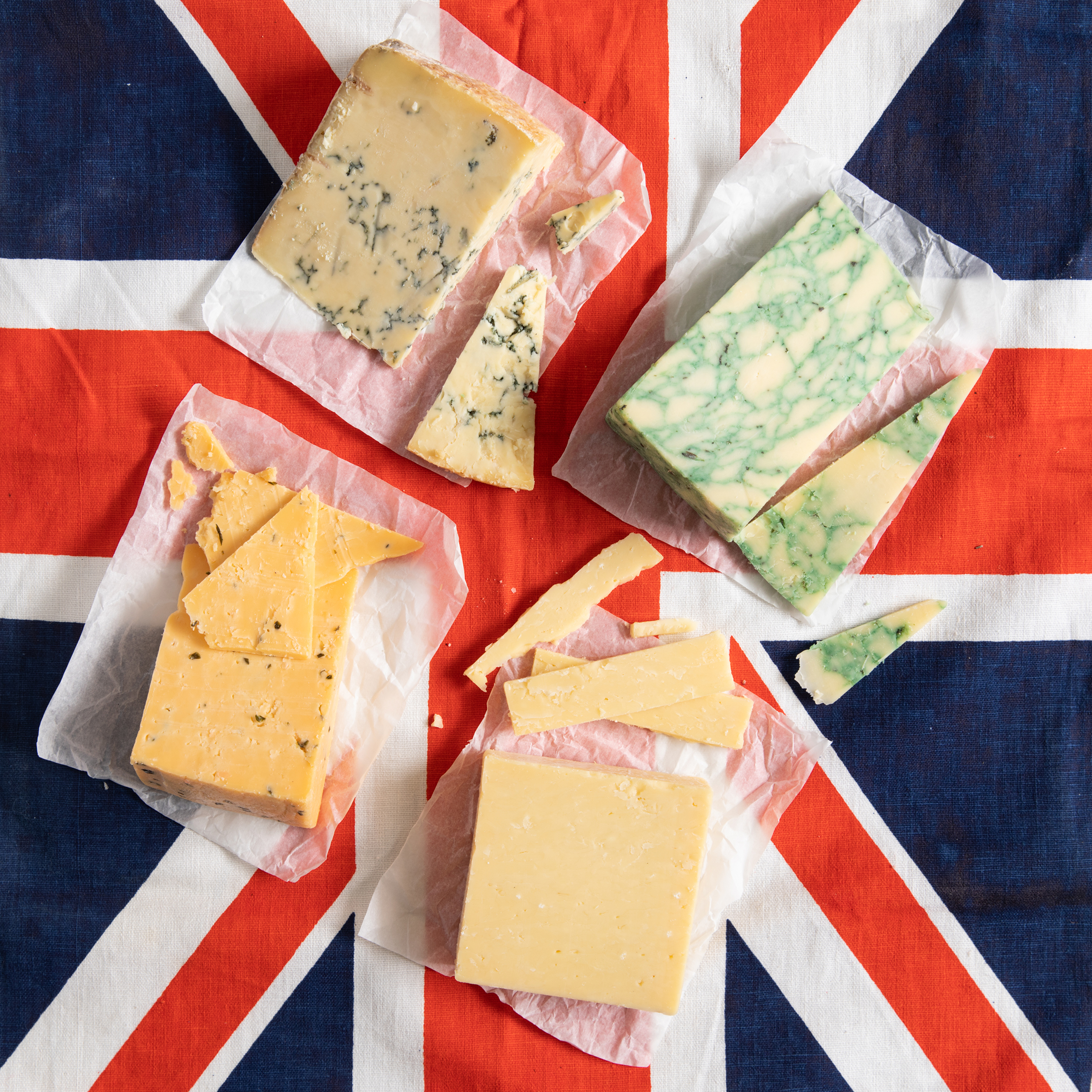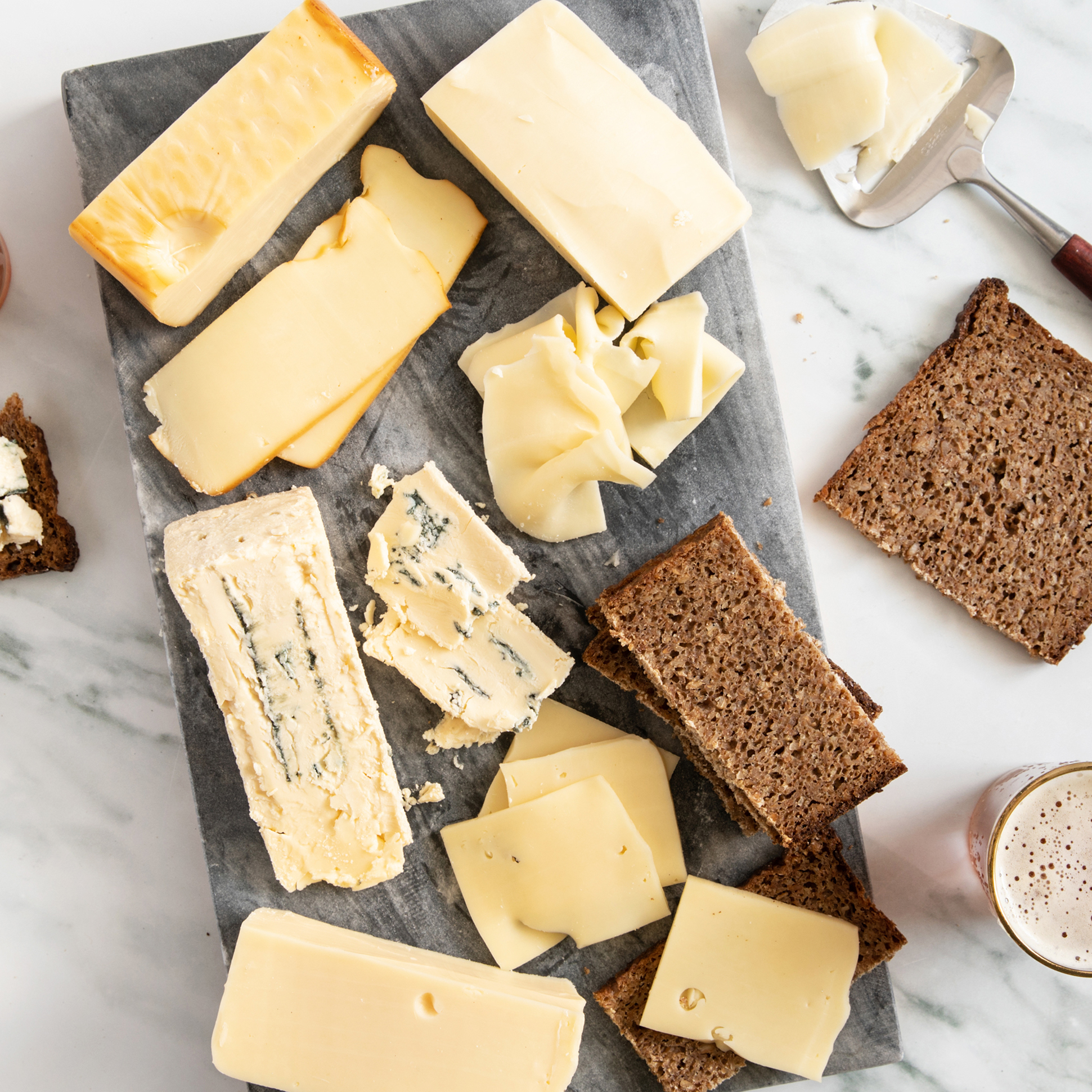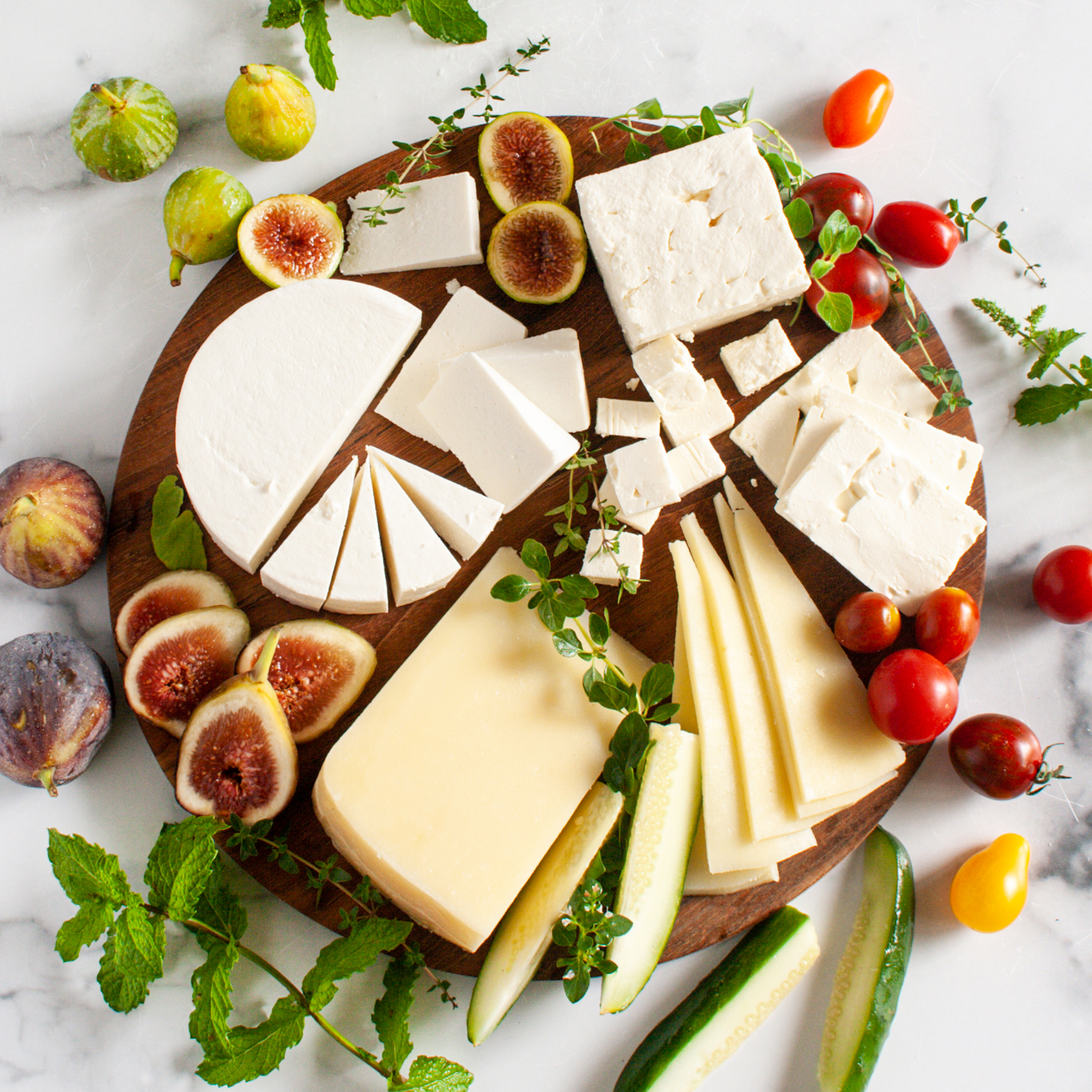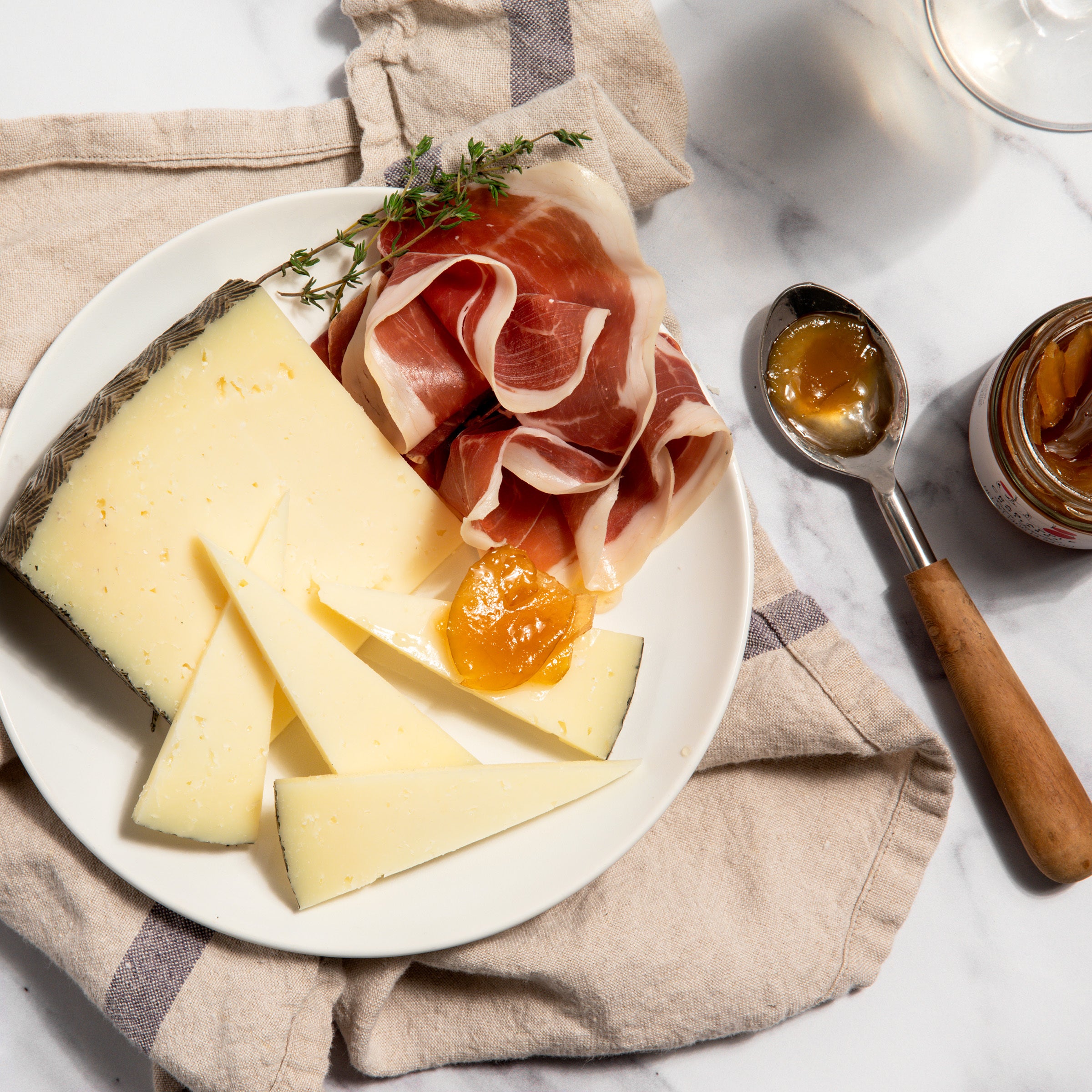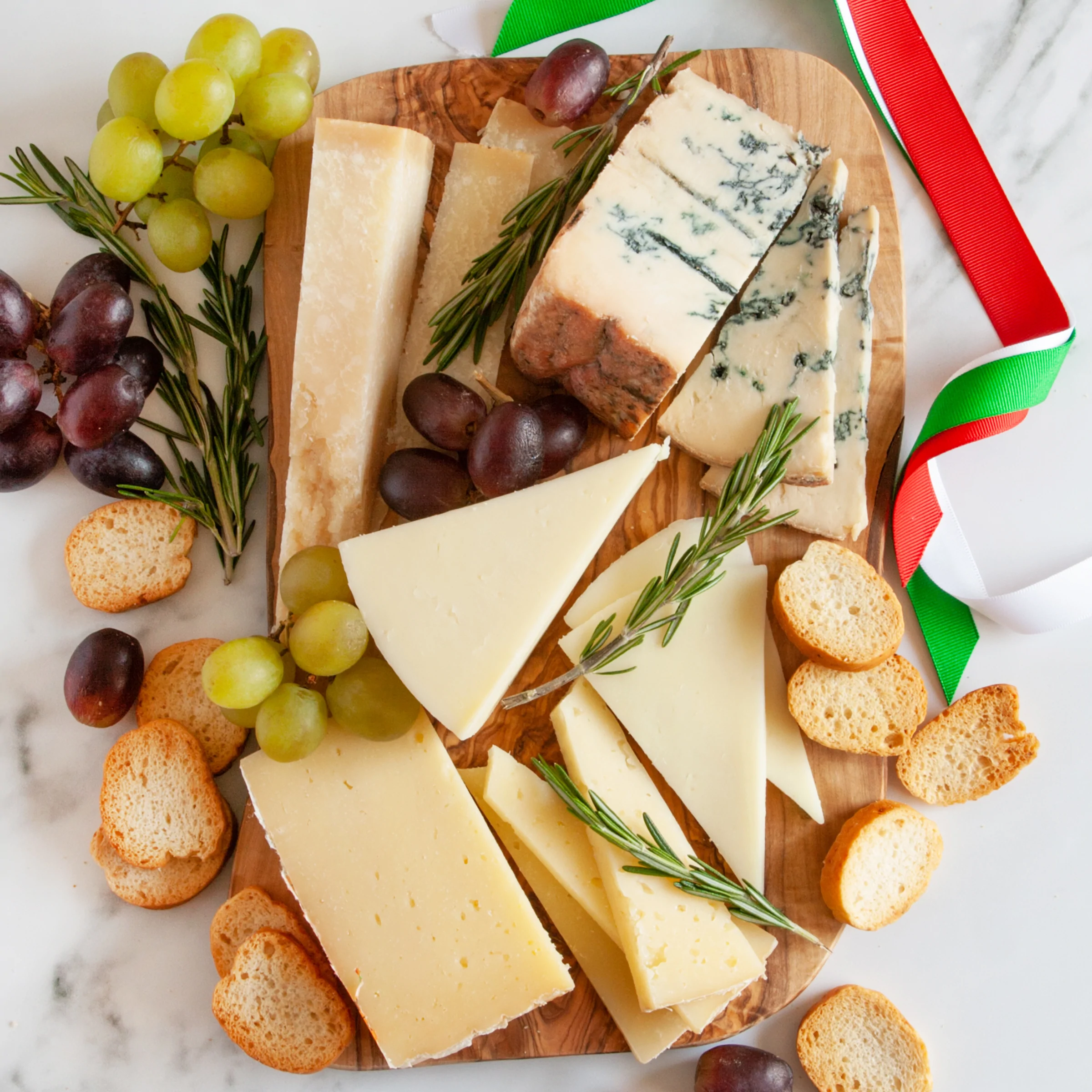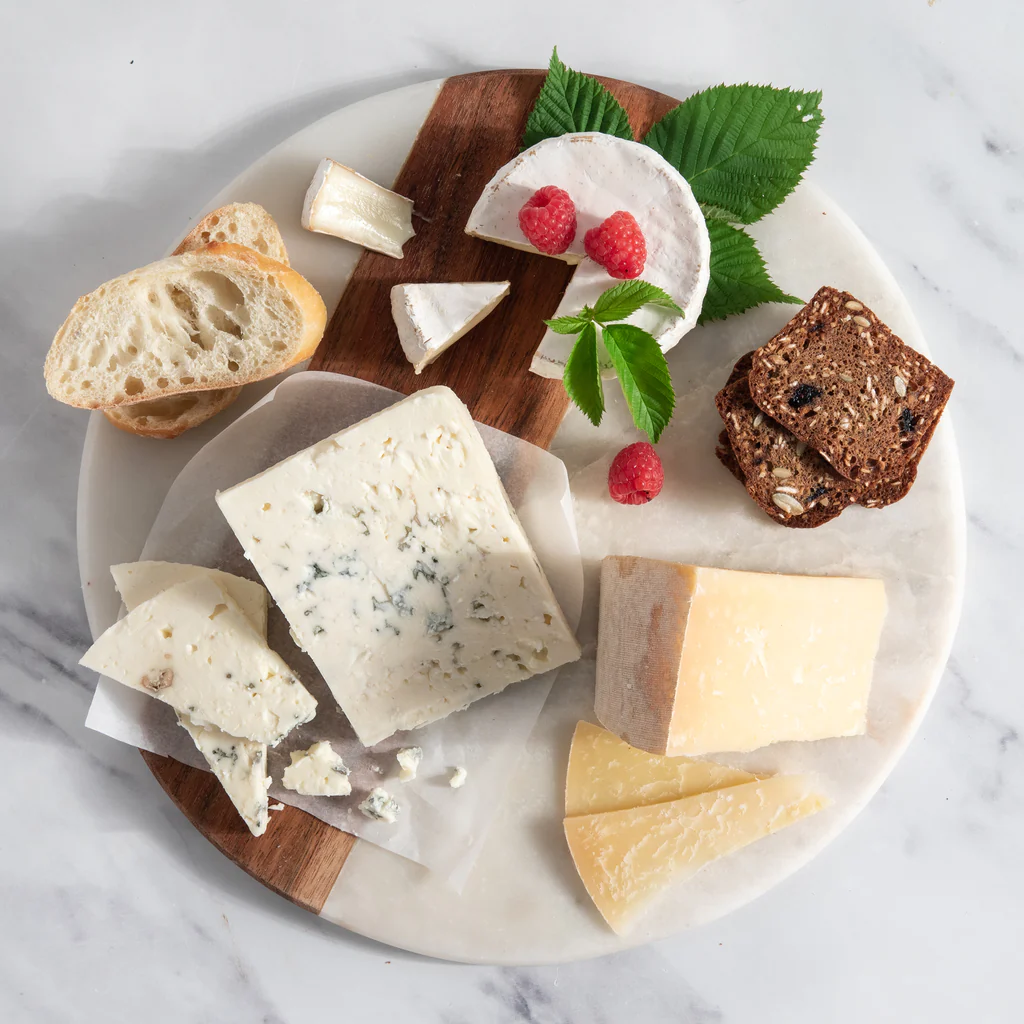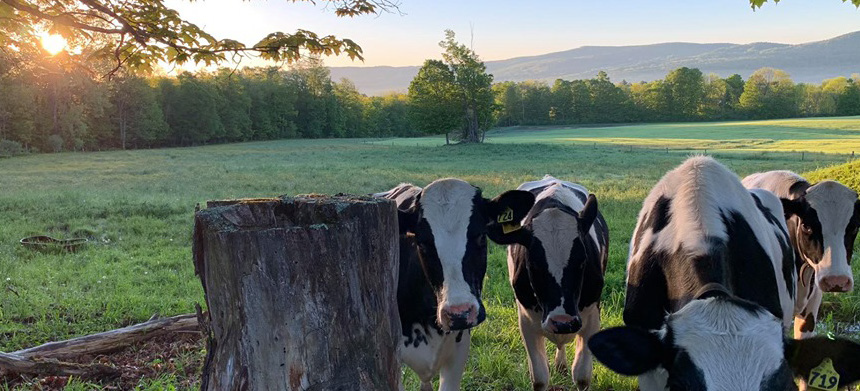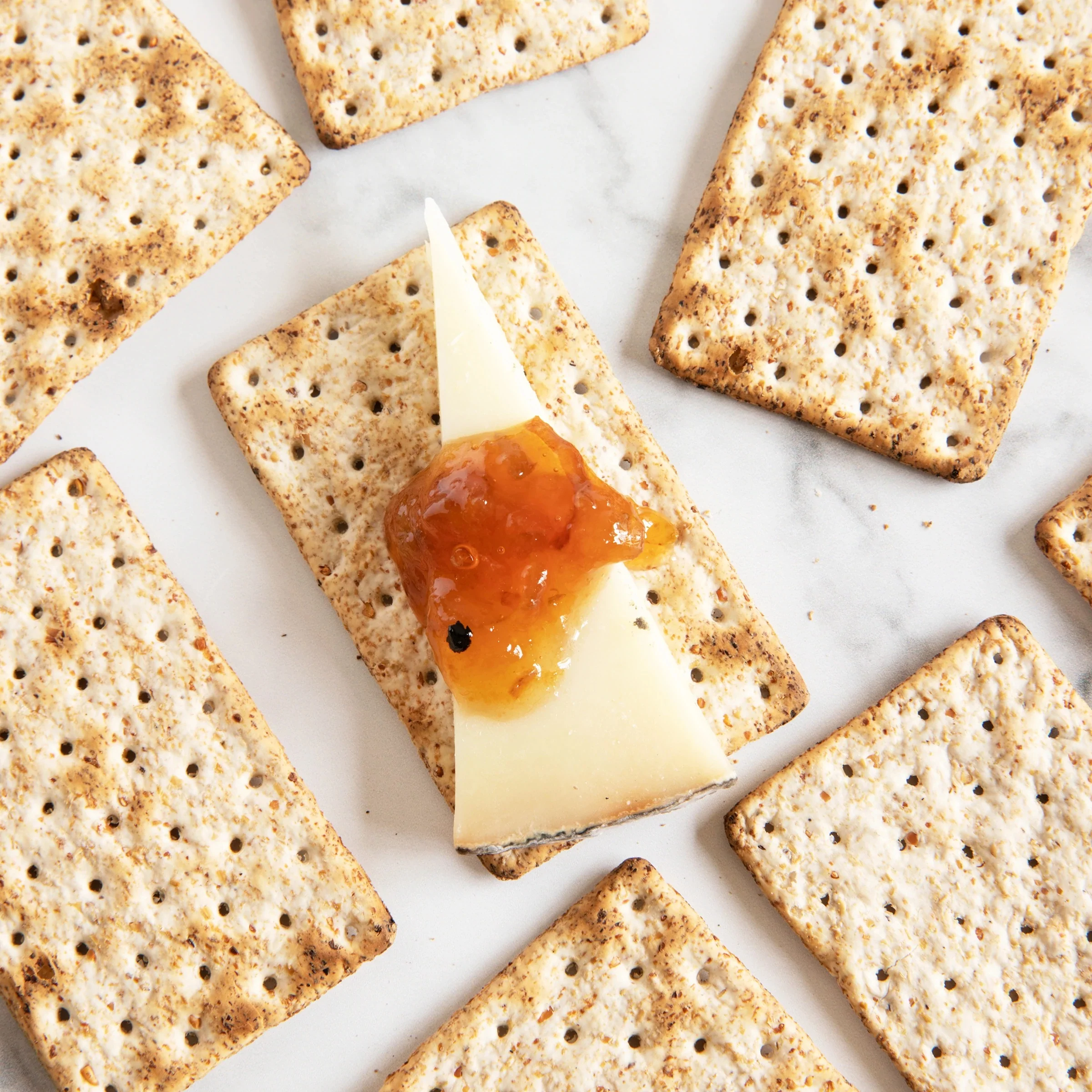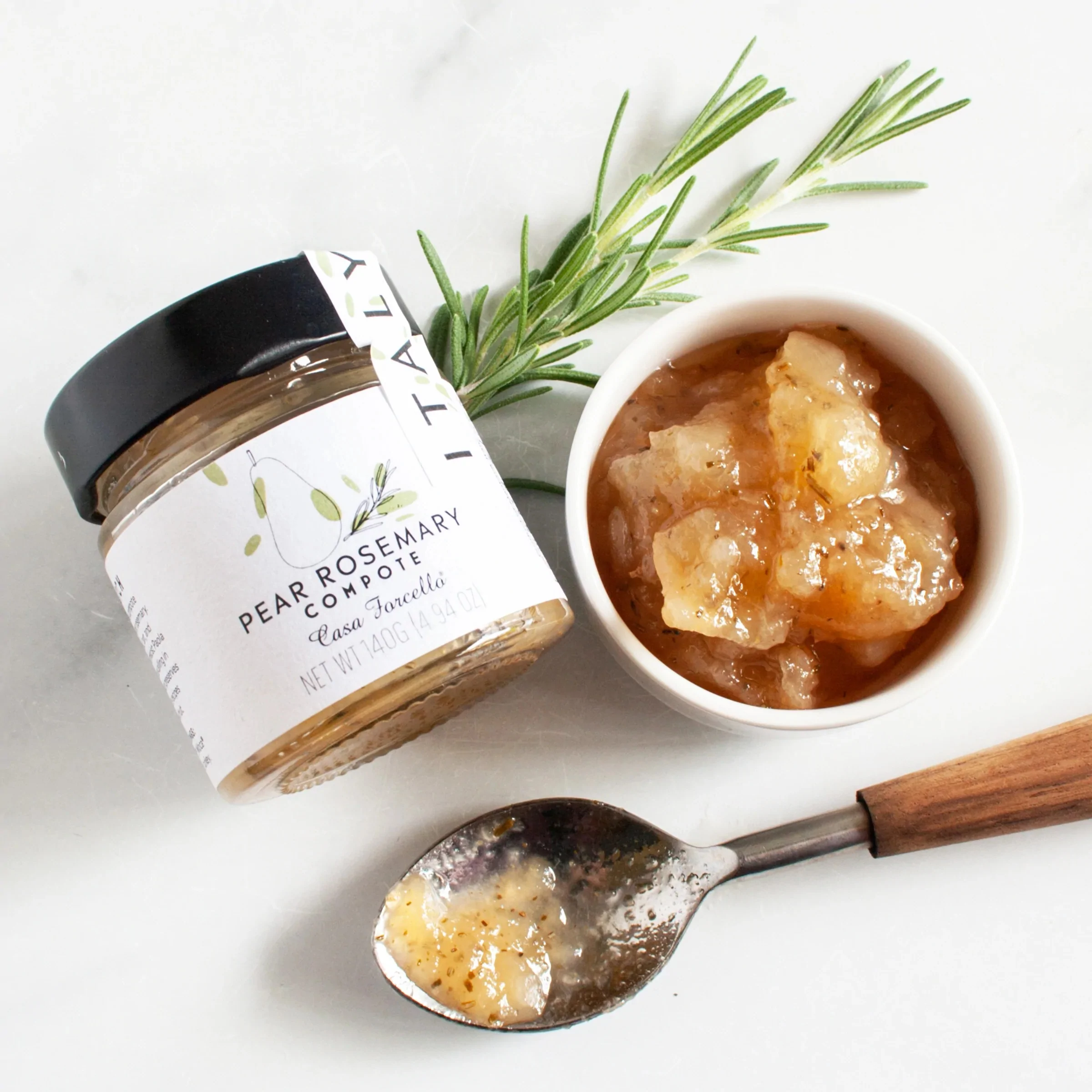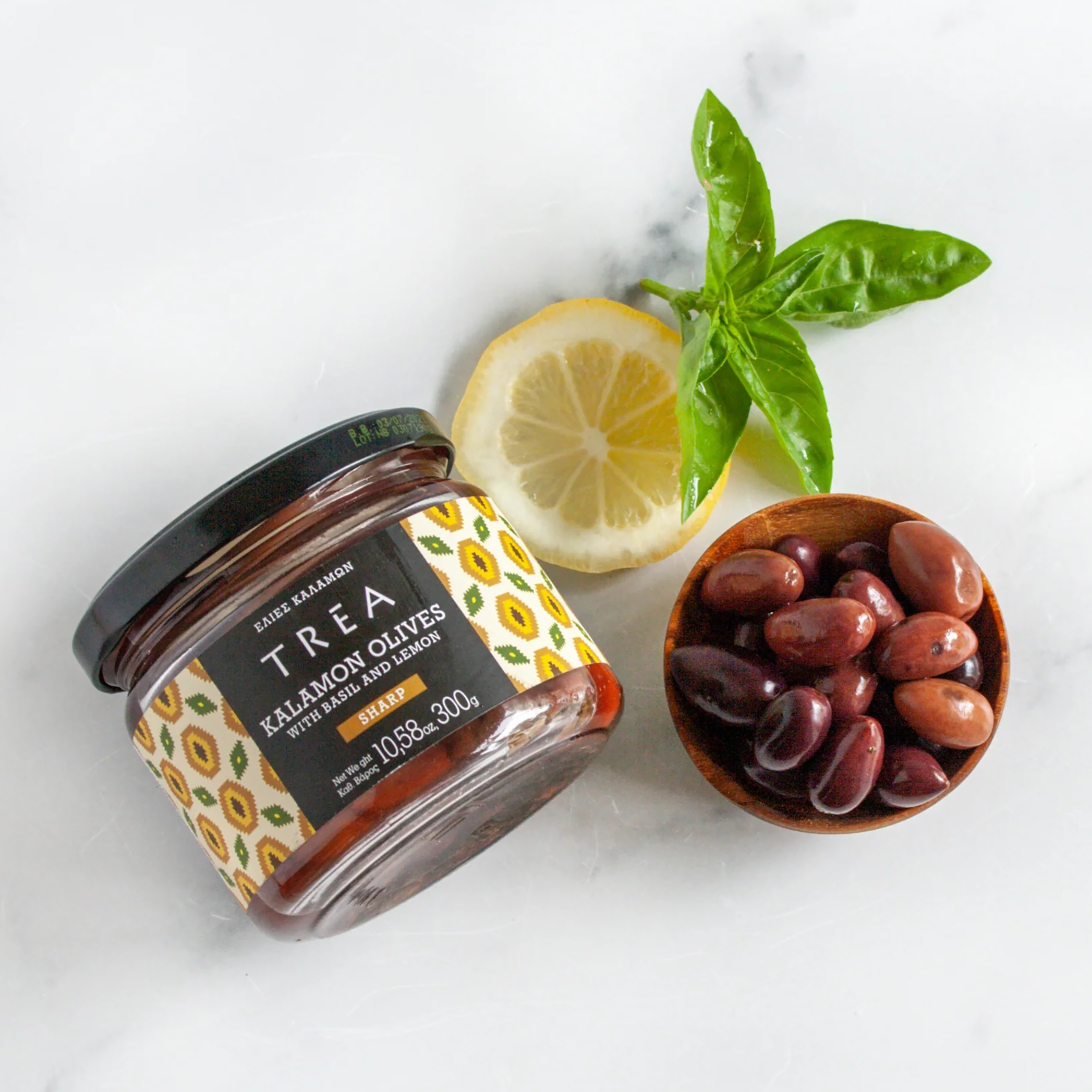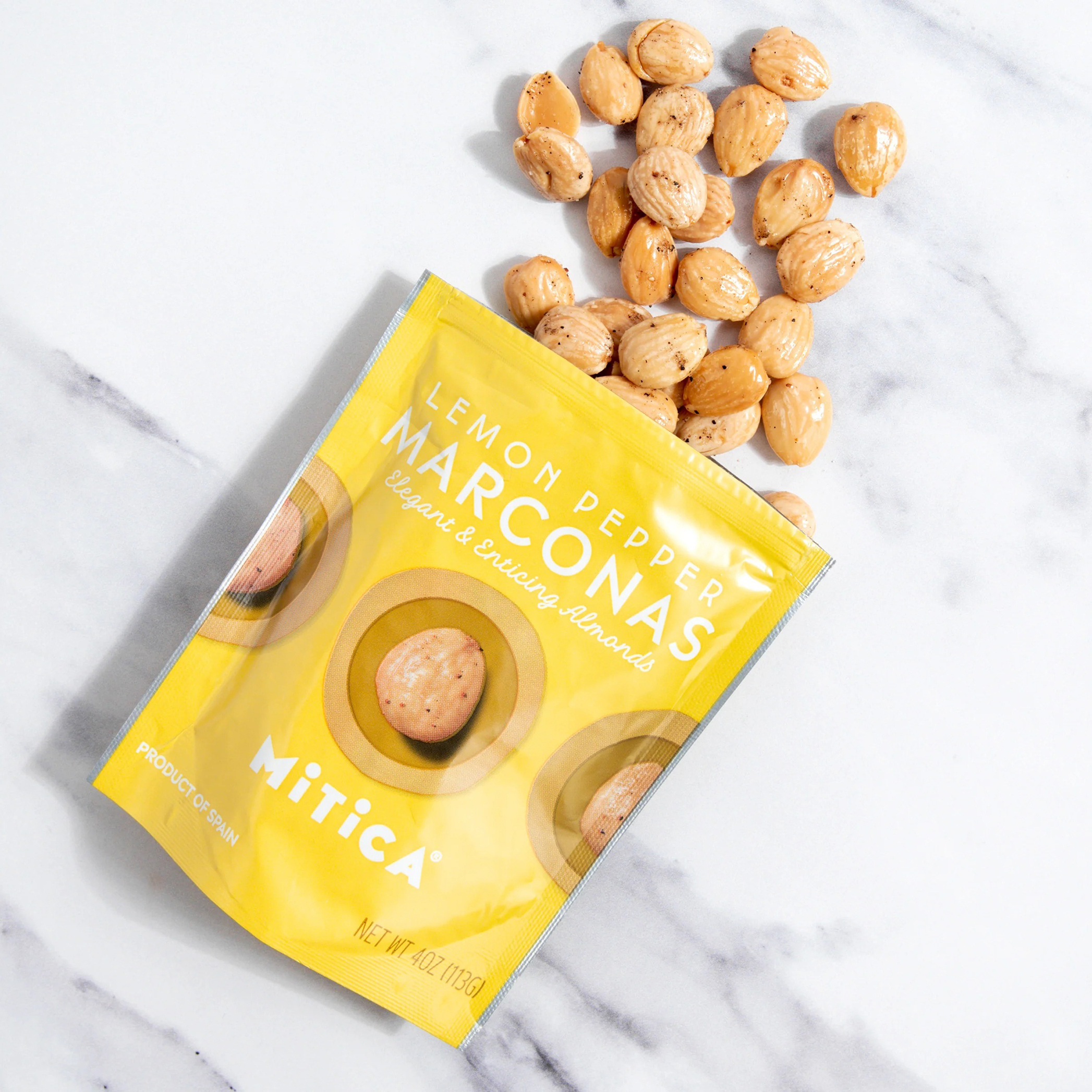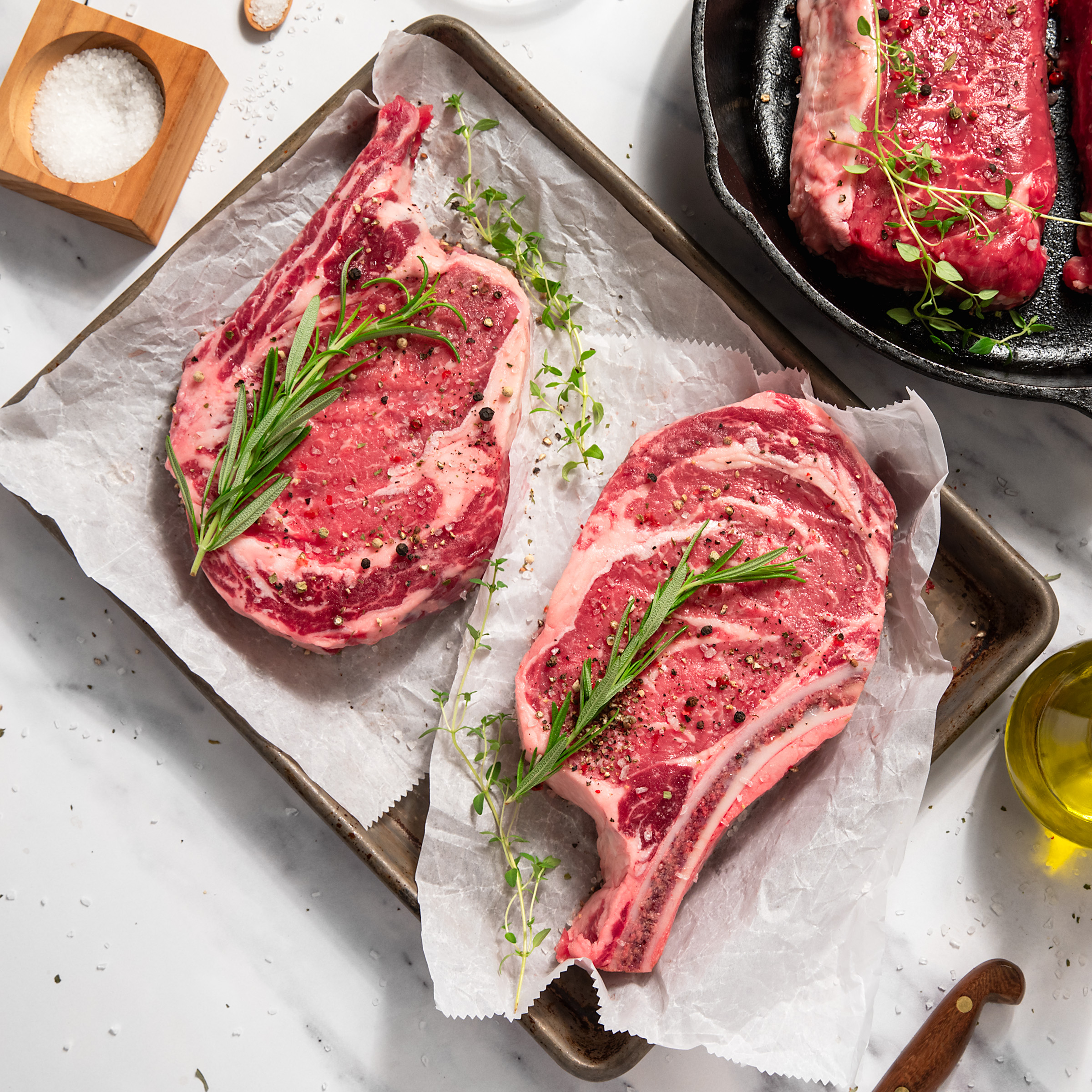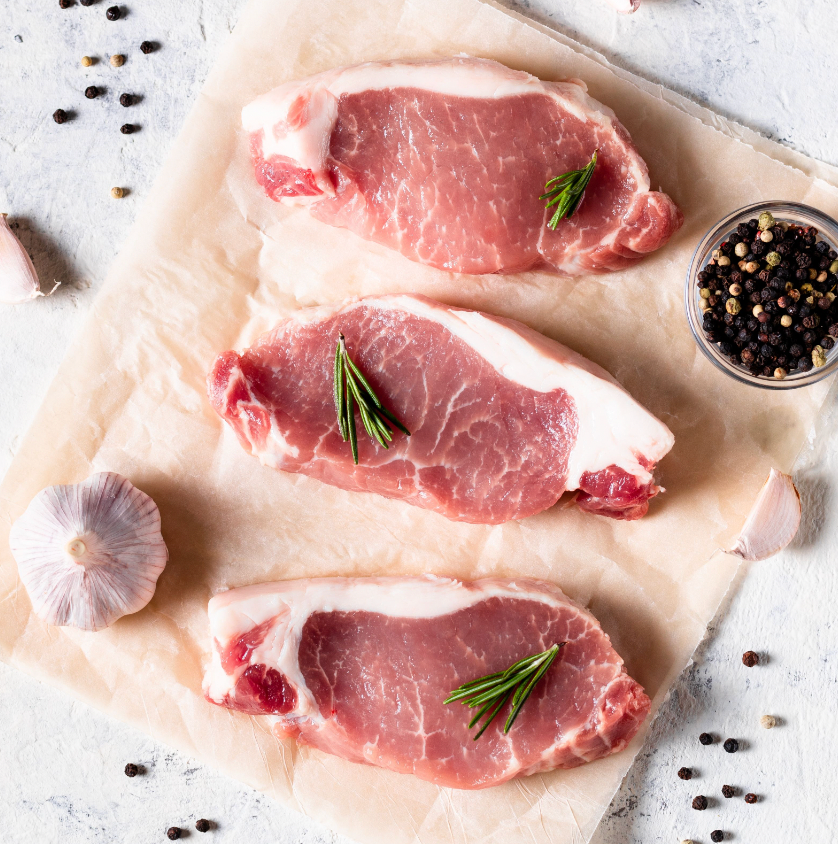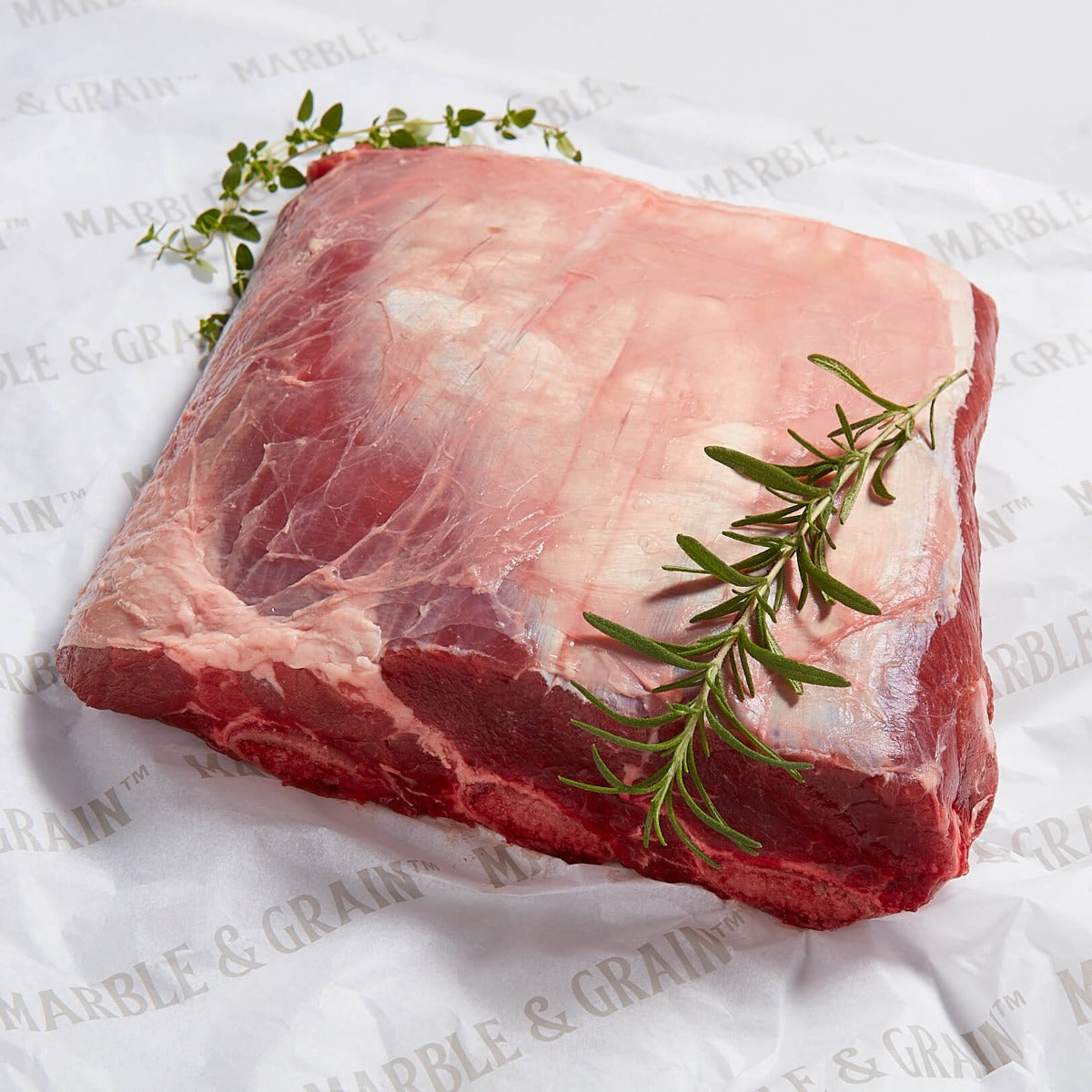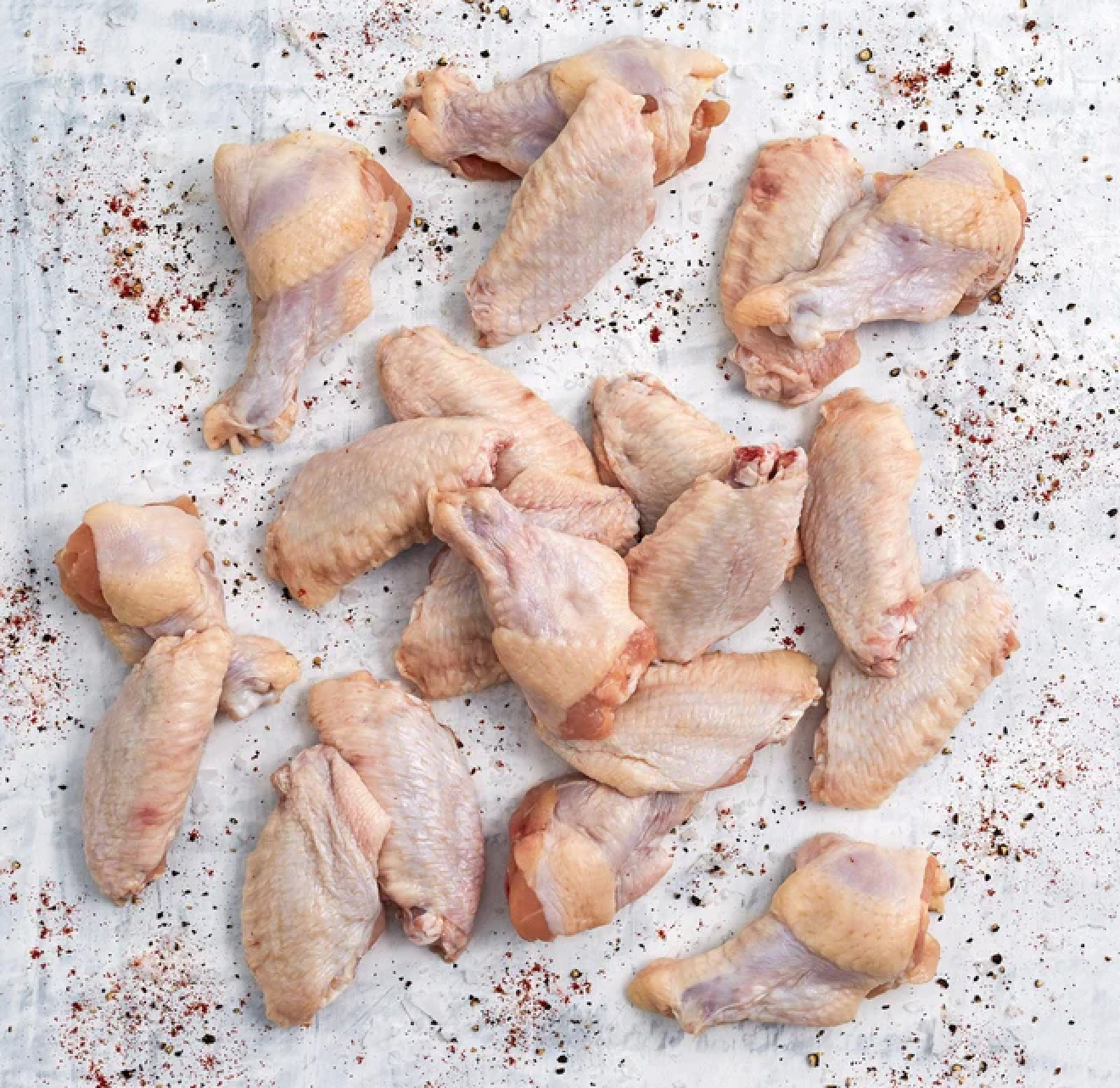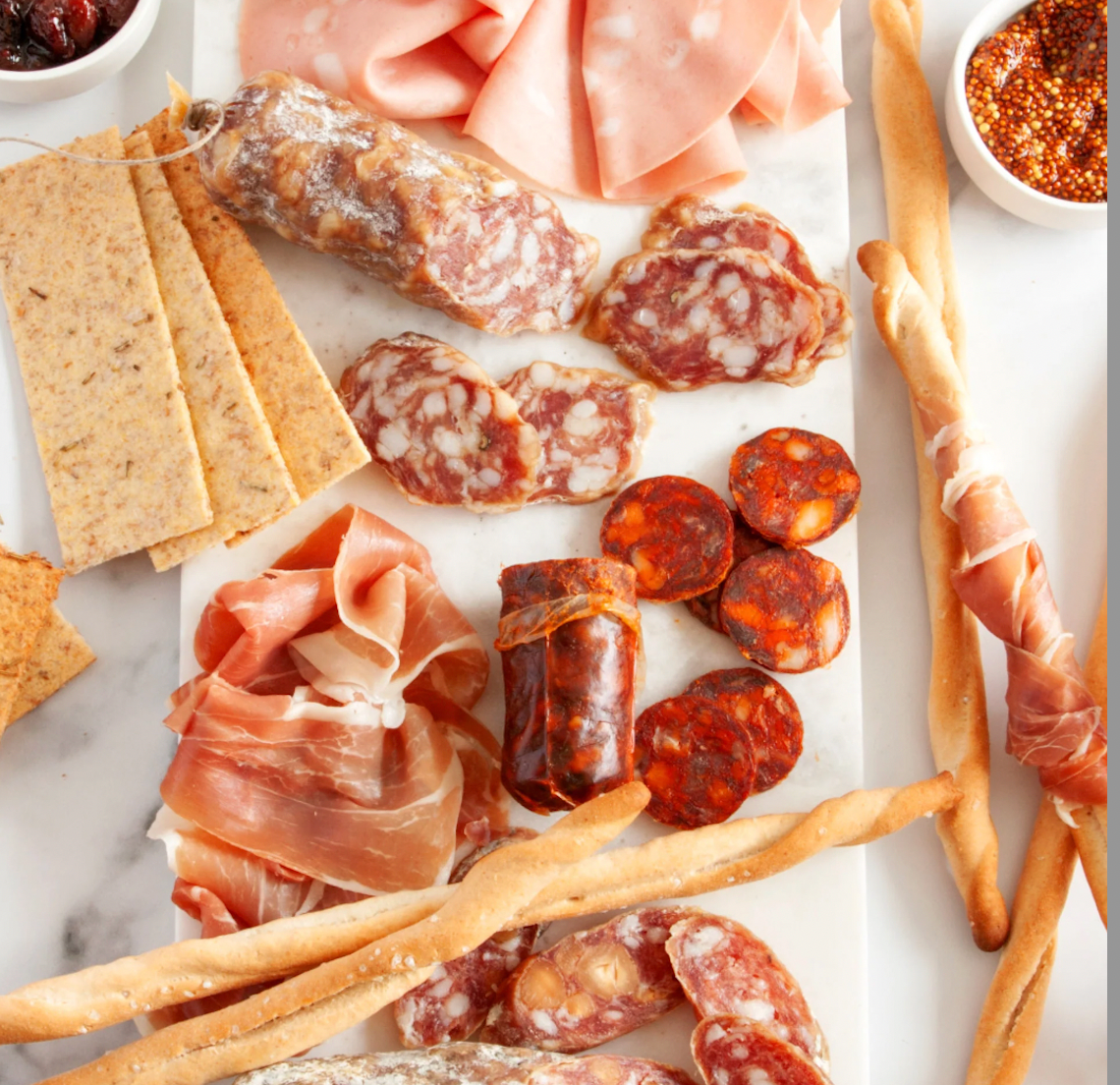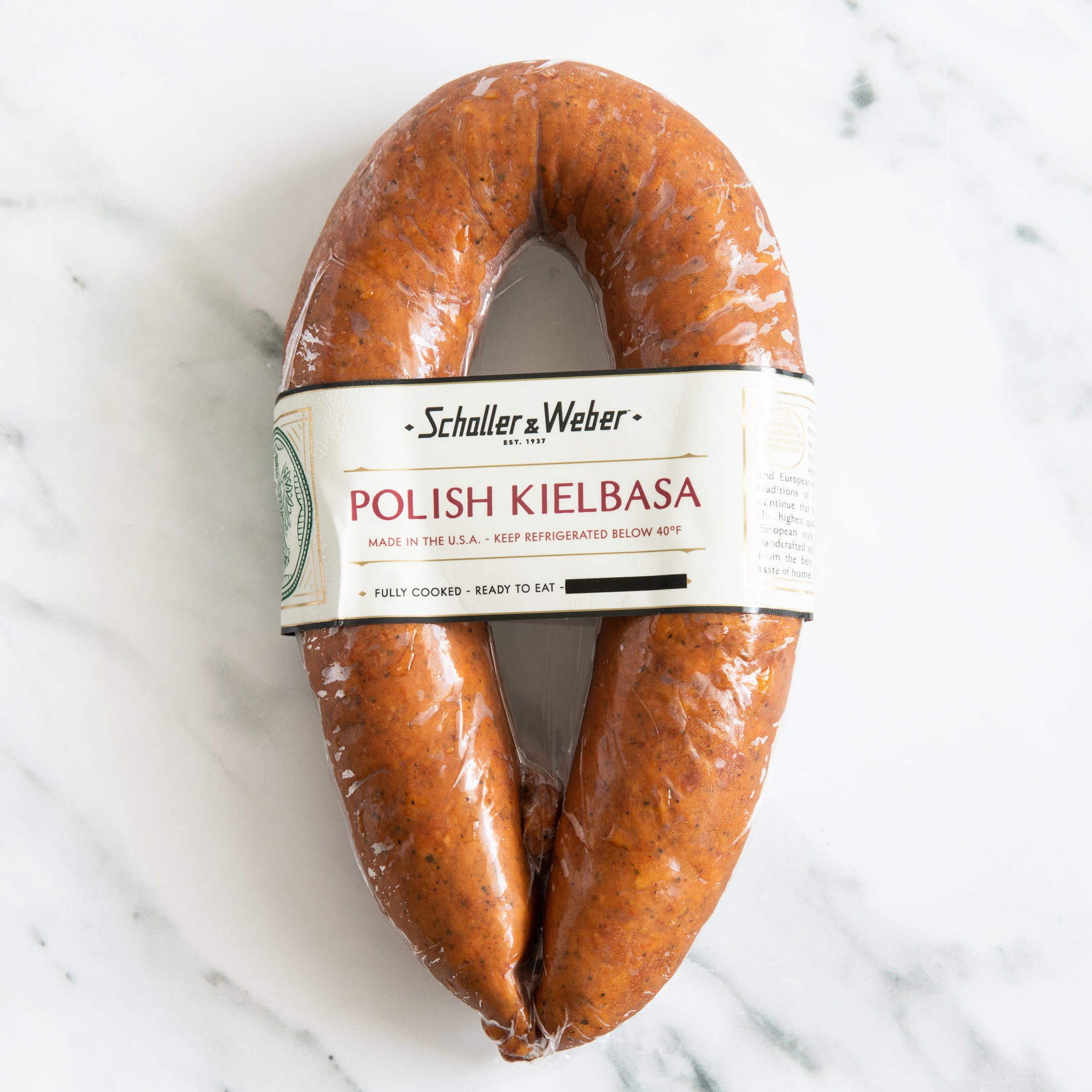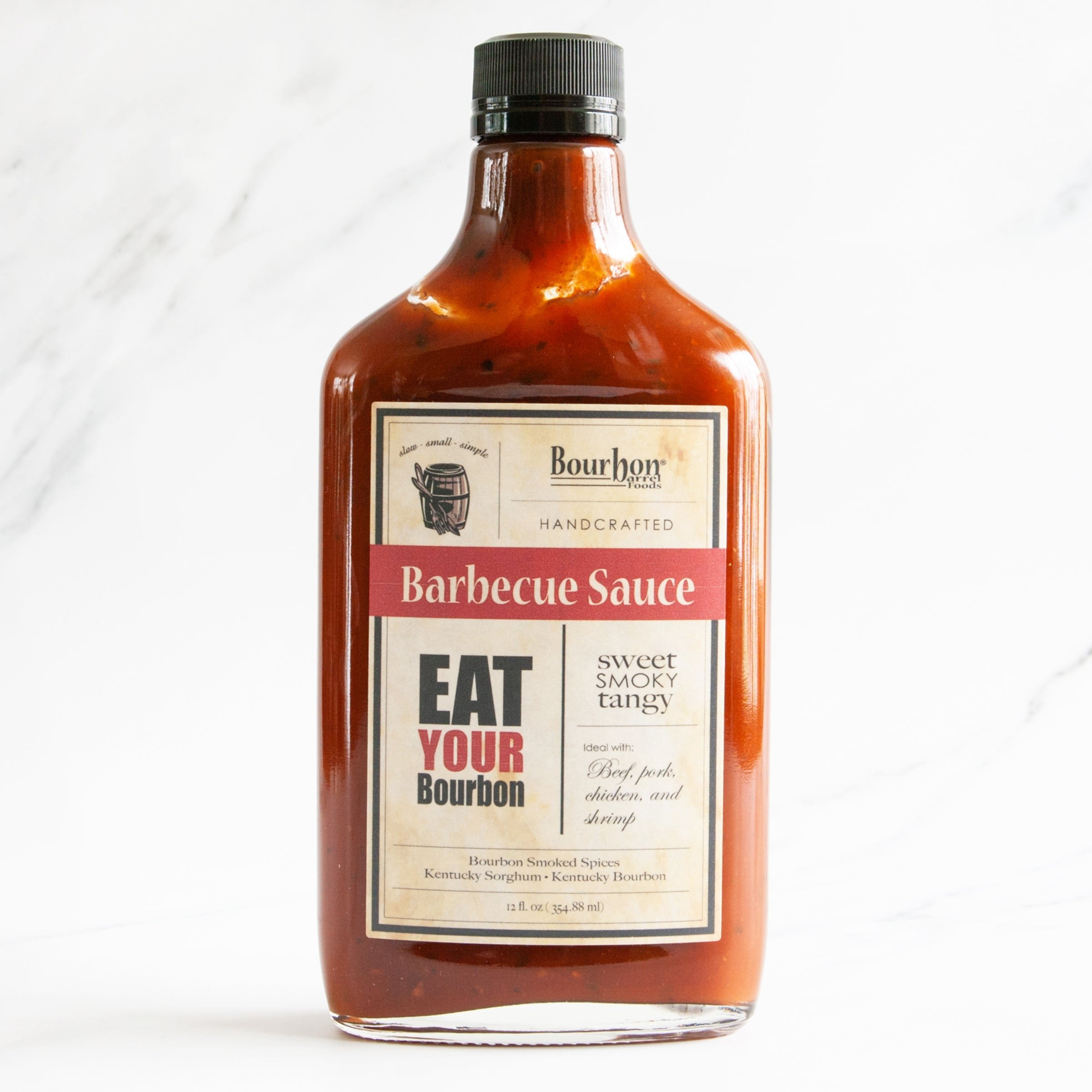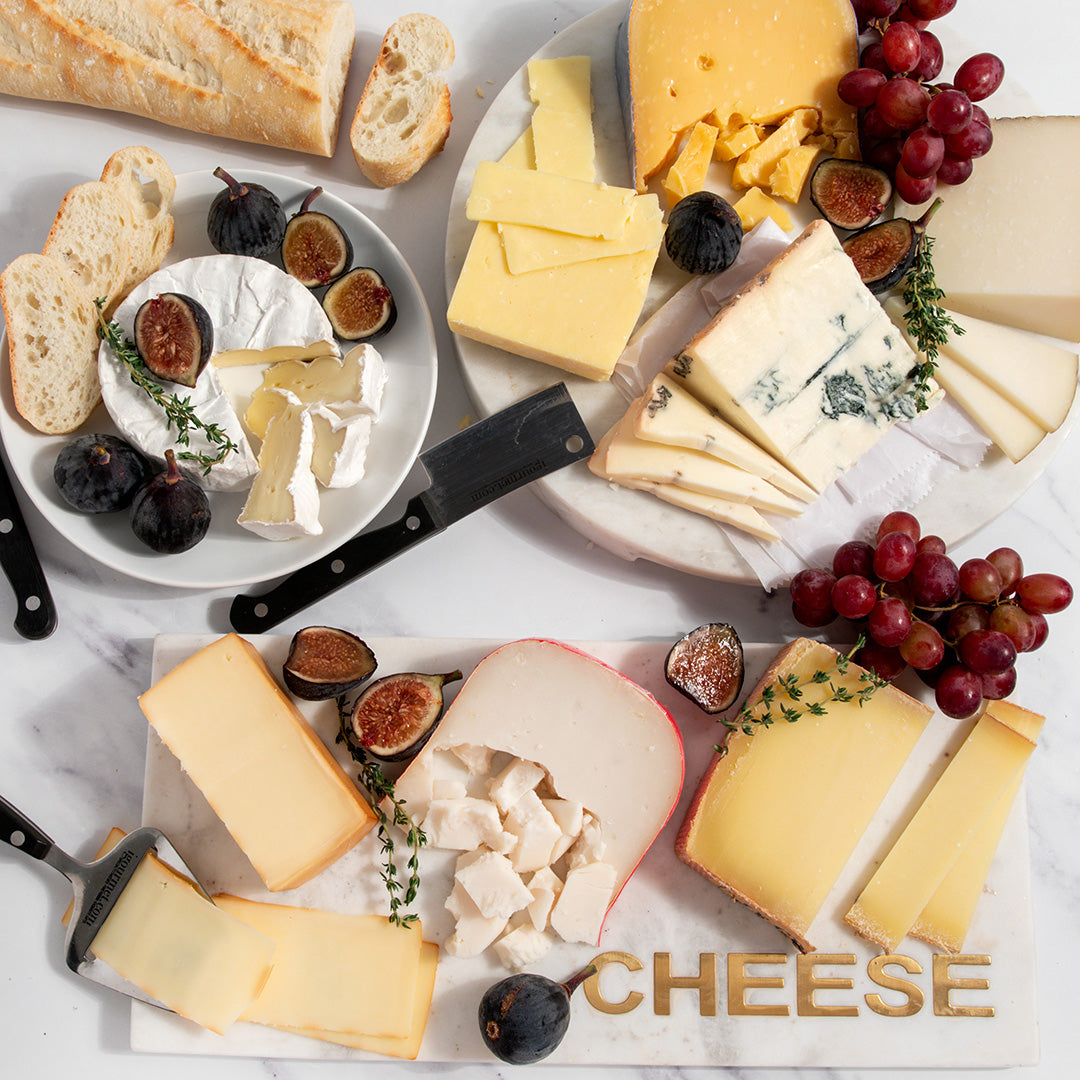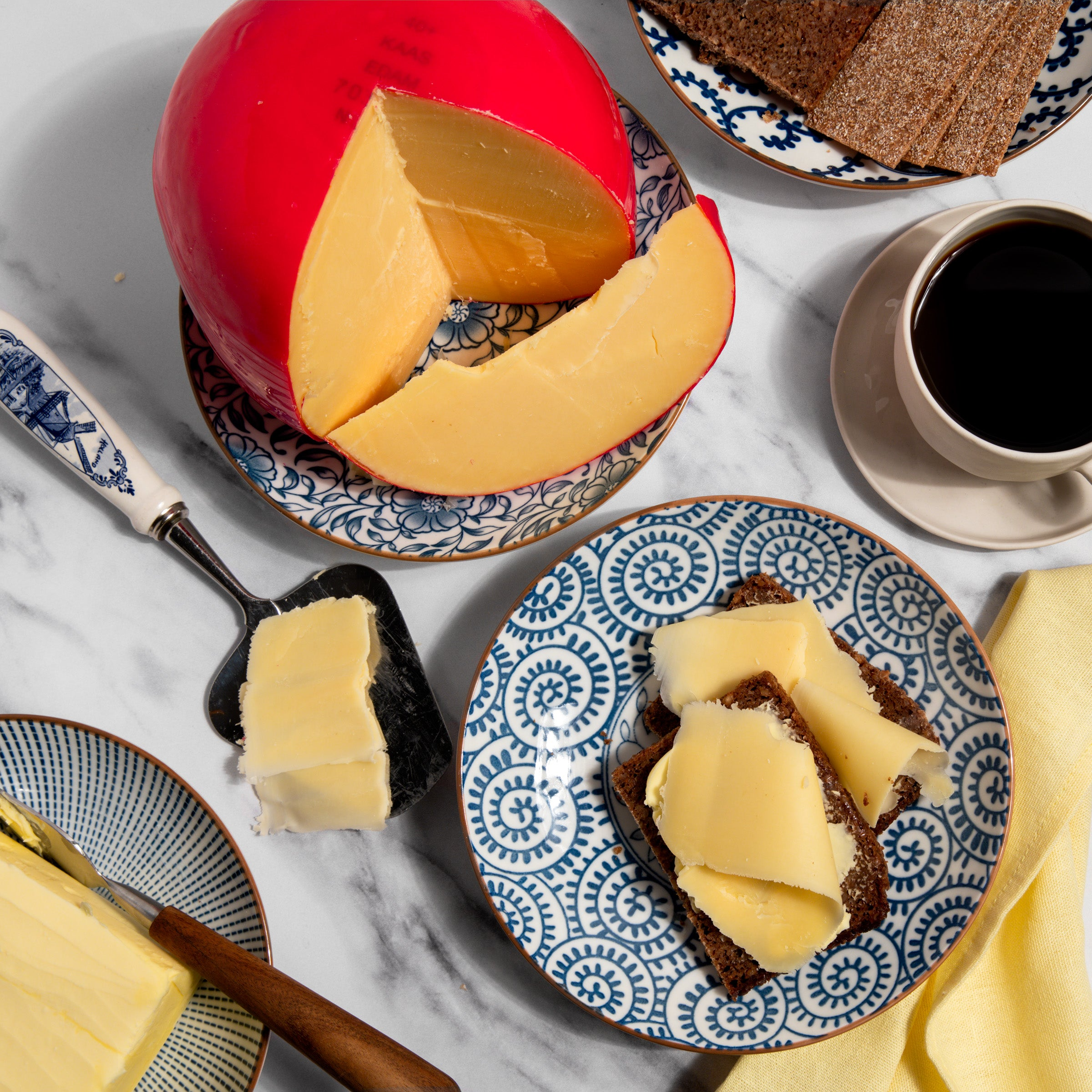Guide to Cheese Types
Swiss Cheese - Cheese Guide
June 12, 2019 | By Dave Mattingly
Holes
Buy authentic Swiss Cheese (also known as Emmental or Emmentaler) online from igourmet.com! Please visit our online store and go shopping at the number one imported food delivery service in the USA. When describing Swiss Cheese in the U.S., a mild, nutty and sweet cheese with large holes throughout its texture is probably what comes to mind. In many other regions of the world, Swiss Cheese simply refers to the origin of the cheese as opposed to the type of cheese and is a generic name for many different types of cheese made in Switzerland. What we call Swiss Cheese in the U.S. is called Emmental or Emmentaler Cheese in Switzerland, Europe and other countries.
The vast pastures of the Emmental River Valley in the West Central region of Switzerland near Bern are where Swiss Cheese found its roots. Swiss Cheese, or Emmental, took its modern form some time during the Middle Ages, most likely during the 14th century. Some of the milk from the dairy's cow herds would be set aside to create this pale yellow cheese that would be shaped into giant wheels (up to two hundred and twenty pounds!). Some believe that the cheese was made so large so as to avoid the tolls that were placed upon pieces of cheese that were transported via the roads to local markets. As cheese dairies developed in the 19th century, Emmental's popularity and production increased, allowing the cheese to spread throughout the country and the world.
The holes that are formed in Swiss Cheese are due to bacteria that are added to the cheese's starter culture, creating carbon dioxide bubbles which carve famous Swiss cheese holes or "eyes". The size of Swiss Cheese holes has a direct correlation to the period of aging of the cheese. Generally, the longer the cheese is aged, the larger the holes in the cheese, since longer time periods give the bacteria more time to create the holes. The size of the holes may also be adjusted by controlling not only the period of aging, but also temperature and acidity.
Emmental Swiss Cheese is a mild, nutty and buttery cheese known for its holes that range in size from small to golf ball size. An excellent melting cheese, Swiss Cheese is ideal for adding to warm dishes and pairs well with fresh fruit and nuts. Its mild flavor lends itself a place on every cheese platter, as a snacking cheese, or as a dessert cheese.
Switzerland is known for its traditional Cheese Fondue, originally a hearty peasant dish made with melted cheese, wine and bread and served in a communal pot. Due to their ability to melt well, many Swiss Cheese varieties lend themselves to use in Cheese Fondue, Switzerland's national dish. While Emmental Swiss Cheese is certainly Switzerland's oldest and most significant cheese, many other cheeses are made in the tradition of Swiss cheese such as Gruyere, Tete de Moine, Appenzeller, and others:
Swiss Cheeses
Emmental (Emmentaler)
Emmental is traditionally known as "Swiss Cheese" in the U.S. Its nutty flavor and delicate aroma make it ideal for use in sandwiches, cheese platters, as a table cheese or melted in Fondue. One of the world's largest cheeses, it takes 262 gallons of cow's milk to make one 200 pound wheel of Emmental.
Gruyere
Gruyere is a Swiss Cheese named for the Gruyere valley in Fribourg, Switzerland. Gruyere is made with full fat milk creating a sweeter cheese that has smaller holes than Emmental. Also made in large wheels, one wheel of Gruyere may reach 100 pounds. Gruyere is an excellent melting cheese, ideal for Fondue and other cooked dishes, or when eaten as an appetizer or dessert cheese.
Baby Swiss Cheese
Baby Swiss is made with small eyes, or holes, and has a soft smooth texture. Baby Swiss is popular for its mild buttery and creamy flavor. An excellent melting cheese, Baby Swiss is perfect for melting into cooked dishes such as omelets, frittatas and quiches. Brands include Jarlsberg, Leerdammer and Nazareth.
Tete de Moine
Tete de Moine is the strongest of the Swiss type cheeses. Originally made by monks, Tete de Moine, French for "Monk's Head", is a sharp and nutty cheese and a specialty of the Swiss Alps. Tete de Moine is eaten by scraping the cheese with a knife in order to develop its flavors. The Girolle was created in the 1980s as an apparatus to cut Tete de Moine.
Swiss Raclette Cheese
Swiss Raclette is a nutty cow's milk cheese that is excellent for melting. This semi-firm Swiss Cheese is traditionally melted in front of an open flame. The melted portion is then scraped off and served with potatoes, gherkins and pickled onions.
Appenzeller
Appenzeller is similar to Gruyere, yet is more pungent. Aged for approximately 90 days, Appenzeller is a semi-firm creamy and slightly fruity cheese with pea-sized holes. A nice melting cheese, Appenzeller pairs well with fruit.
When searching for gourmet Swiss Cheese online, look no further than igourmet.com.






